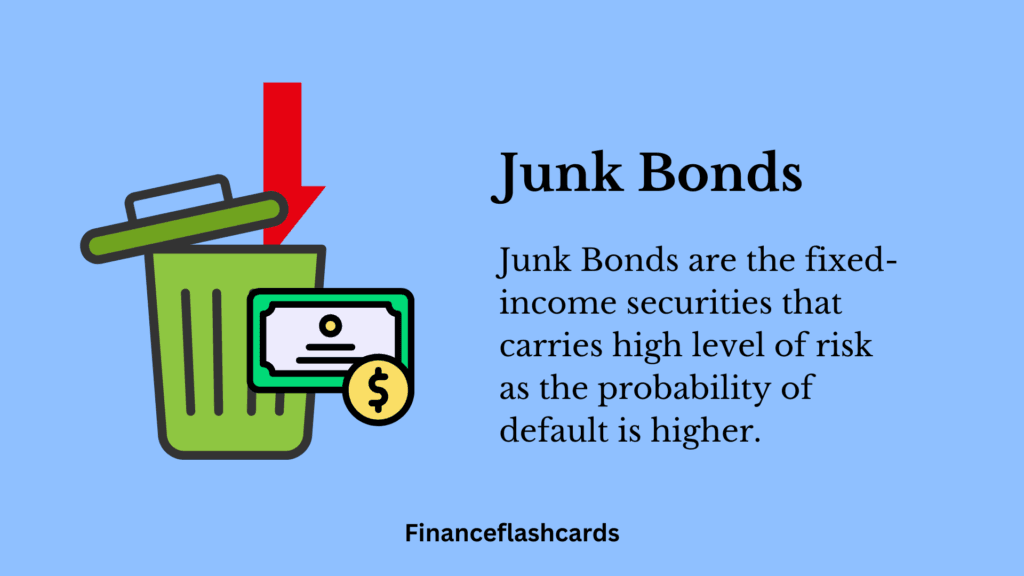Junk Bonds are the fixed-income securities that carries high level of risk as the probability of default is higher.
Table of Contents
What Is Junk Bond?
A junk bond is a high-risk, high-yield bond issued by companies or entities with lower credit ratings. These bonds offer higher interest rates to compensate investors for the increased risk of the issuer defaulting on payments.
Junk bonds are bonds issued by companies that are experiencing financial difficulties and are at high risk of defaulting, failing to pay interest payments, or failing to repay investors’ principal

Understanding Junk Bonds
However, if the issuer faces a high risk of default, interest payments may not be made as scheduled. As a result, such bonds provide higher yields to compensate investors for the increased risk.
Bonds that are believed to have a higher risk of default and receive low ratings by credit rating agencies, namely bonds rated Ba or below (by Moody’s) or BB or below (by S&P and Fitch).
These bonds typically are issued at a higher yield (for example, a higher interest rate) than more creditworthy bonds, reflecting the perceived higher risk to investors.
Rating Table

High Risk=High Yield
Junk bonds, also known as high-yield bonds, operate on the principle that higher risk equates to higher yield. Because these bonds are issued by companies or entities with lower credit ratings, there is a greater likelihood of default compared to investment-grade bonds.
To compensate investors for taking on this increased risk, junk bonds offer significantly higher interest rates. This makes them attractive to those seeking greater returns, despite the potential for losses if the issuer fails to meet its financial obligations.
Advantages
Higher Yields: Junk bonds offer higher interest rates compared to investment-grade bonds, providing investors with the potential for higher returns.
Diversification: For investors seeking to diversify their portfolios, junk bonds can provide exposure to different sectors or companies that may not be available through other investments.
Potential for Capital Gains: If a company issuing junk bonds improves its financial health or credit rating, the bond’s value can rise, leading to potential capital gains for investors.
Disadvantages
Higher Risk of Default: The main downside is the increased risk of the issuer defaulting on payments, which could result in the loss of principal and interest for investors.
Volatility: Junk bonds tend to be more volatile than investment-grade bonds, which means their prices can fluctuate significantly, especially during economic downturns.
Lower Liquidity: Junk bonds may be harder to sell compared to higher-rated bonds, especially if the issuer faces financial difficulties or if the market for these bonds is less active.
Credit Downgrades: If the issuer’s financial situation worsens, the bond’s rating could be downgraded, which would likely lead to a decrease in the bond’s value.
Closing Thoughts
Junk bonds offer higher yields due to their increased risk of default, making them attractive to investors seeking higher returns. However, they come with significant risks, including the possibility of default, price volatility, and lower liquidity.